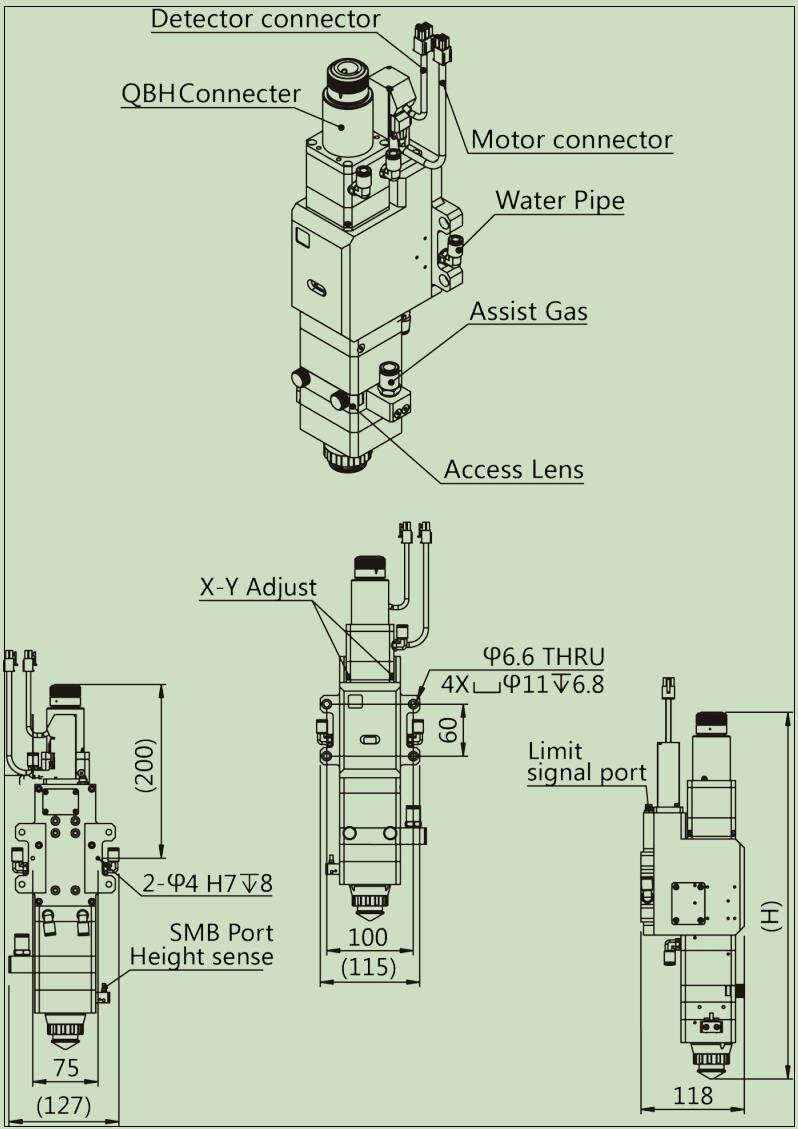Function of high power laser cutting head
High power laser cutting head is generally composed of a nozzle, a focusing mirror, an auxiliary system and a focus tracking detection system. It can make the spot energy higher in industrial processing and improve processing efficiency. And according to the actual processing scene, adjust the laser spot shape and processing depth when emitting light. Adding some specific monitoring modules and displacement systems can have a good package, which can effectively reduce splashes and protect the lens.
Features of high power laser cutting head
Components and functions of high power laser cutting head
1) Nozzle
The nozzle is generally coaxial with the laser cutting head, and has various shapes: cylindrical, conical, zooming, etc.
The principle of nozzle selection: its aperture must be larger than the focused beam, that is to say, the laser beam cannot touch its wall when passing through the nozzle.
The caliber of the nozzles varies from time to time. Large-diameter nozzles have no strict requirements on the focused laser beam; while smaller-diameter nozzles have higher requirements on the focused beam. It is necessary to ensure the collimation of the laser beam, The diameter fits the nozzle bore perfectly. In the actual application process, since the outlet of the auxiliary gas is also in the nozzle part, it is very important to choose a suitable caliber. If the caliber is too small, the gas field of the nozzle will be disturbed, otherwise, the nozzle will be partially deformed due to high temperature.
2) Focusing mirror
The focusing mirror is located directly above the nozzle, and its main function is to focus the beam to obtain a spot with dense energy.
Under normal circumstances, the smaller the focal length of the focusing lens, the smaller the diameter of the spot after focusing (the focus will be denser in energy), and the depth of focus will become shallower. When cutting thick plates, the shallow depth of focus will seriously affect the cutting quality, resulting in burrs and burrs. Not only that, but the shallow depth of focus will shorten the distance between the cutting head and the plate, and the slag will easily invade the laser head and cause adverse effects. So, we should try to use the appropriate focal length for the post-cutting procedure. Suntop Laser offers the following suggestions for everyone:
When the thickness of the sub-material is large, a larger focal length and increased laser power can be used to alleviate the weak spot energy; when the thickness of the sub-material is small, a small focal length can be used to achieve high-speed cutting.
3) Auxiliary system
The auxiliary system includes: water cooling system, auxiliary gas and protective air curtain.
The water cooling system is to protect the laser cutting head from normal production and cool down without affecting the processing efficiency and quality.
4) Focus tracking detection system
The focus tracking system is generally to ensure a stable focus spot. According to different requirements, different function detection devices are installed on the cutting head to maintain a low cutting error rate.

Maintain of high power laser cutting head
Due to the characteristics of the laser cutting process, the lens needs to be maintained regularly. It is recommended to clean the protective lens once a week, and the collimating lens and focusing lens once every two to three months.




























